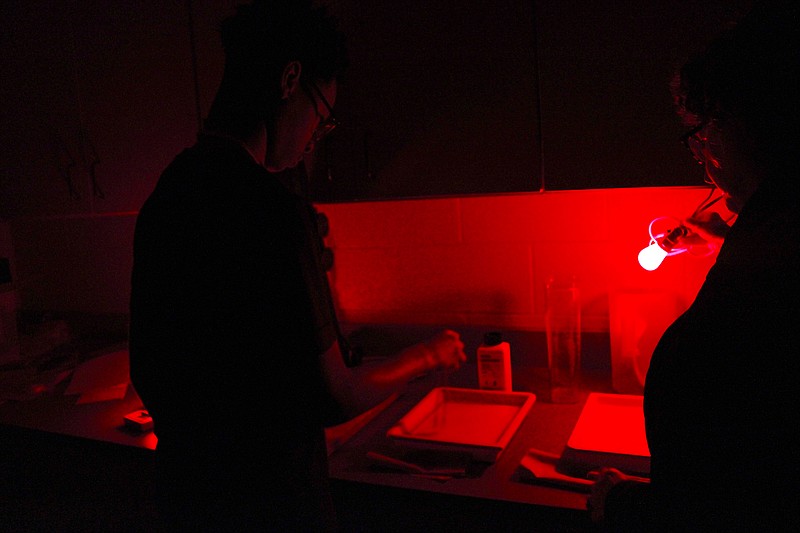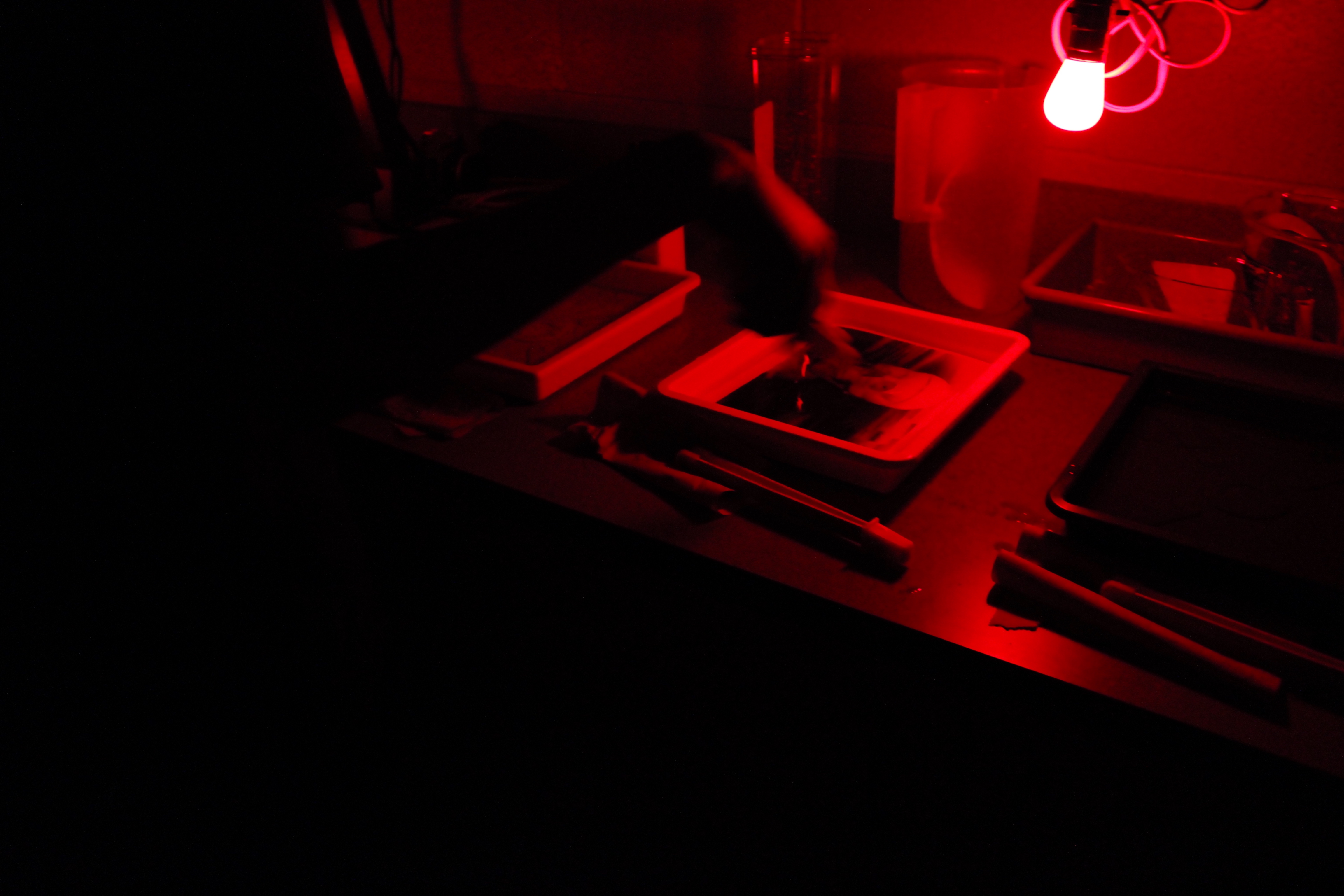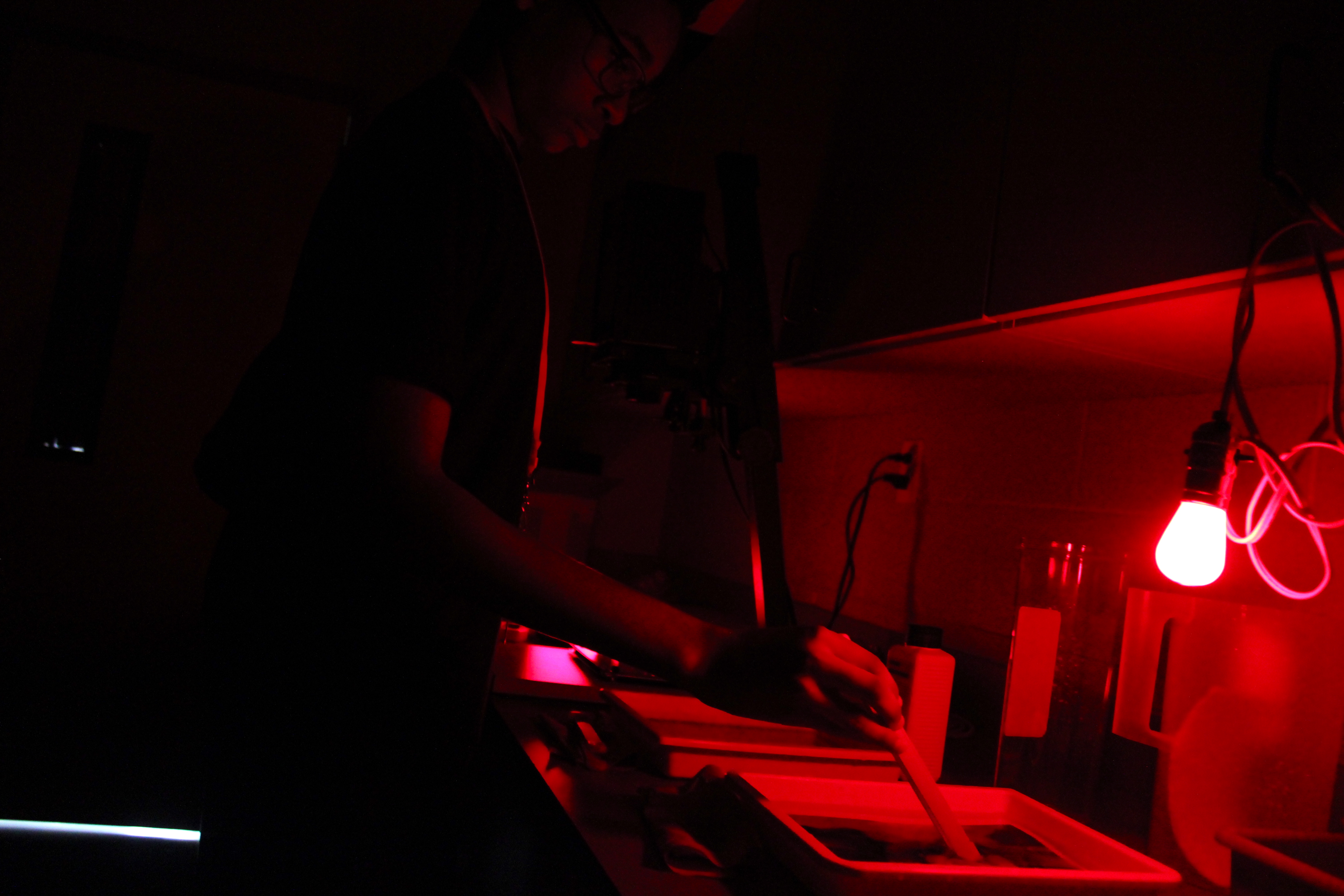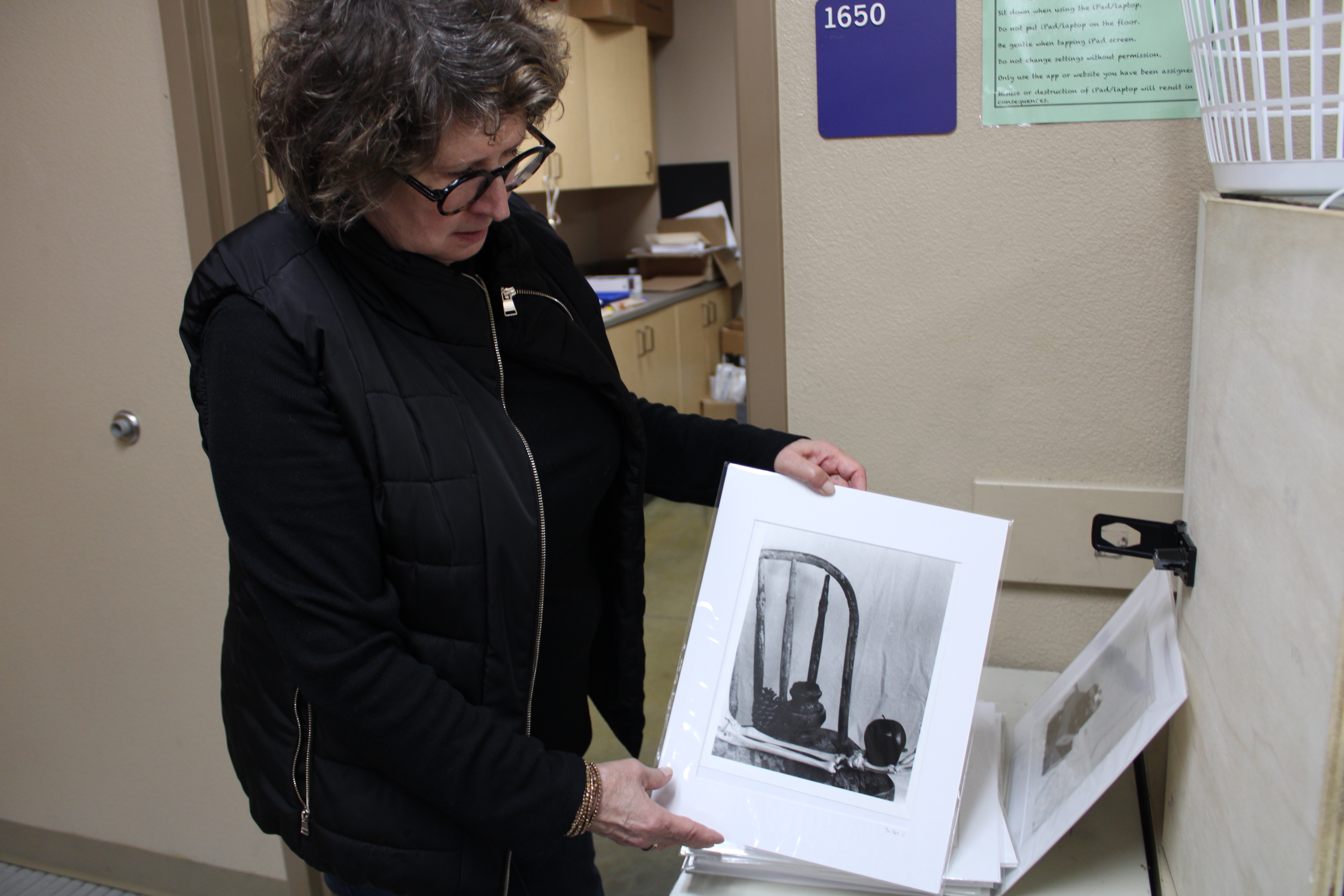Lit only with by a couple small red light bulbs, sophomore Ryan Stewart on Tuesday got his first ever opportunity to print his own photograph in a makeshift dark room in Katie Harwell's 3D Visual Arts class.
The opportunity was made possible by the state's Arts in Education program, where professional artists work in local classrooms to share their crafts with students.
This semester, photographer Lisa Tarver has been working with Harwell's students, teaching them how to take a photo on film, develop their negative and then print their photo to size.
"All of these children have never been in a dark room before," Tarver said. "They each get the opportunity to take a photo, go in the dark room and then develop their photo into a print."
Earlier in the semester, students used automatic film cameras to shoot photos around Harwell's classroom.
"They'd hit the shutter and didn't know if the photo took, since they couldn't see the photo," Tarver said. "I taught them that you've gotta learn from the sound if the camera is working, if the photo took."
From there, they developed their negatives on the film, a process similar to developing photo prints that must be done in complete darkness. On Tuesday, Tarver demonstrated the process, where students use a black, opaque bag with arm holes to keep light out while they submerge their film strips in the developer chemicals.
And on Tuesday, students got the chance to develop their photos onto paper.
In the dark room, Ryan first secured his negative into an enlarger, and Tarver helped him focus the image onto his paper. Once the image was locked in, Ryan submerged his paper into a bath of Dektol paper developer, where his photo of a classroom skull slowly became clear on the paper.
The photo print next went into a water bath, to wash the developer chemical off, and finally went into a chemical "fixer," where chemicals in the photo paper are washed off to reveal the final print.
The room had to be nearly pitch-black, aside from the couple of red light bulbs, which are the only color of light that won't damage the black-and-white photographic prints as they develop.
"In the dark room, they picked it up quicker than I did," Tarver said.
She and Harwell were both surprised by students' aptitude for developing photos, a process that's becoming a lost art in the digital age.
"But really, everything we do in the dark room, you can do in Photoshop," Tarver said.
Added Harwell, "It's like doing Photoshop by yourself."
Tarver repeated the process with two more classes Tuesday afternoon. Next semester, she'll supply students with manual film cameras and put more emphasis on the technical and artistic aspects of photography, she said.
"This has been a big deal project. They've loved this," Harwell said. "Several want to study photography in college."
Tarver said that the purpose of the arts in education program is to give students the opportunity to participate in creating art. She said what students are learning with her can help them to grow their creativity.
"I hope they get to express themselves through film and printing and that makes their world a bigger world and takes their creativity somewhere it's never been," she said. "The process will lend itself to other areas of art in their futures."
And images printed from film might make a comeback, she said.
"I told them, they can put it on their resumes that they've done dark room work... I think dark rooms are coming back," she said. "That's, I think, going to be a big thing in the art world. There's something about a silver gelatin print, printed in a dark room, that holds its value."
Tarver's instruction at EHS is free for the district, instead funded by a grant from the Arkansas Arts Council through the South Arkansas Arts Center. All the materials students use are also grant-funded.
"It's a really good thing for teachers," Harwell said.
"And it's a wonderful opportunity for me to teach them," Tarver added.
Harwell and Tarver's students will get to exhibit their work in April 2024 at the South Arkansas Arts Center; additional details about that are forthcoming.
To learn more about the Arts in Education program, visit arkansasheritage.com/arkansas-art-council/registry-rosters/arts-in-education or saac-arts.org/about-us/arts-in-education.
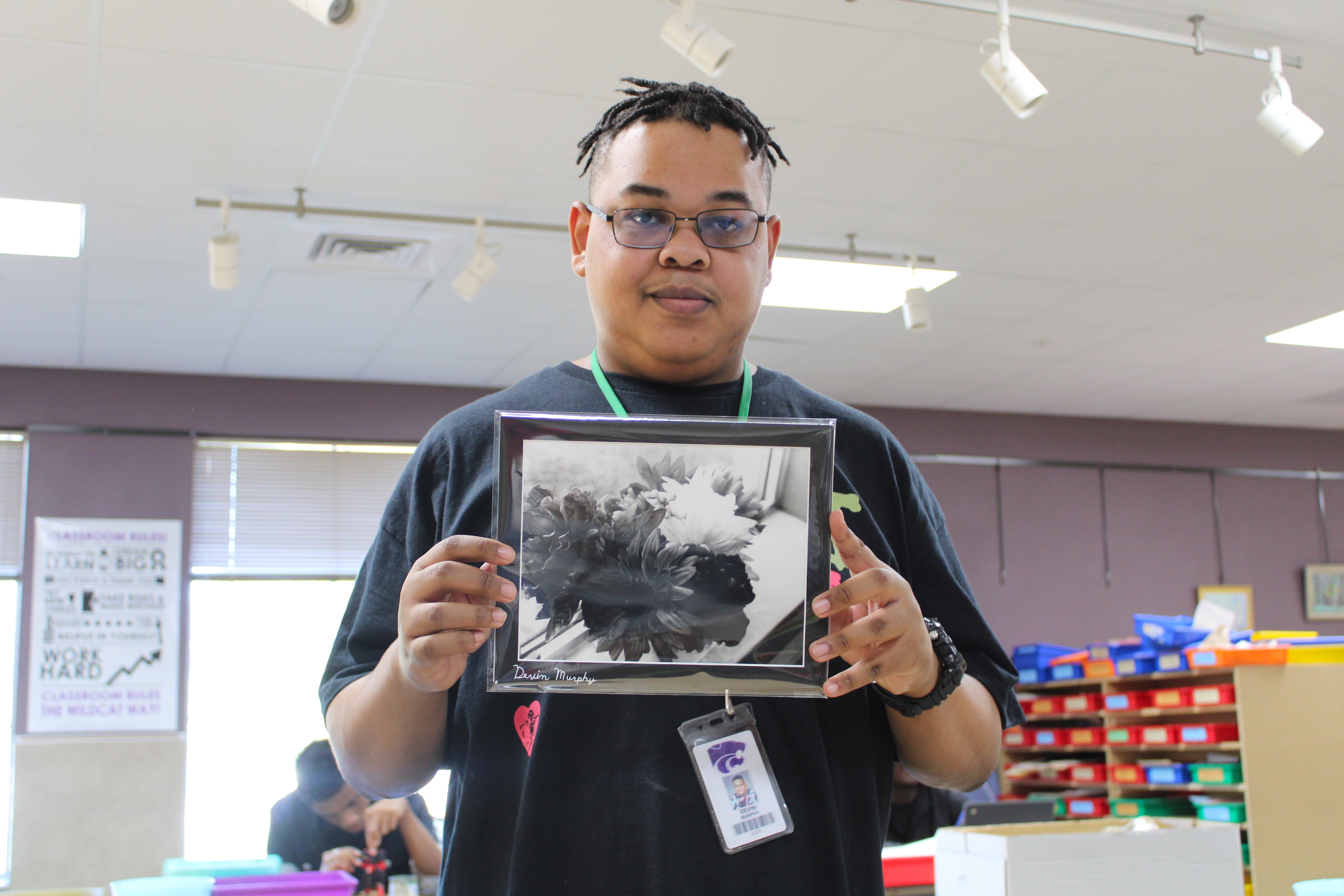 Devin Murphy, a junior at EHS, shows off a completed work on Tuesday. Devin took the photograph he's holding, developed the negative, printed the photo in the dark room and placed it in a mat frame. His work will be displayed with his classmates' in April at the South Arkansas Arts Center. (Caitlan Butler/News-Times)
Devin Murphy, a junior at EHS, shows off a completed work on Tuesday. Devin took the photograph he's holding, developed the negative, printed the photo in the dark room and placed it in a mat frame. His work will be displayed with his classmates' in April at the South Arkansas Arts Center. (Caitlan Butler/News-Times)